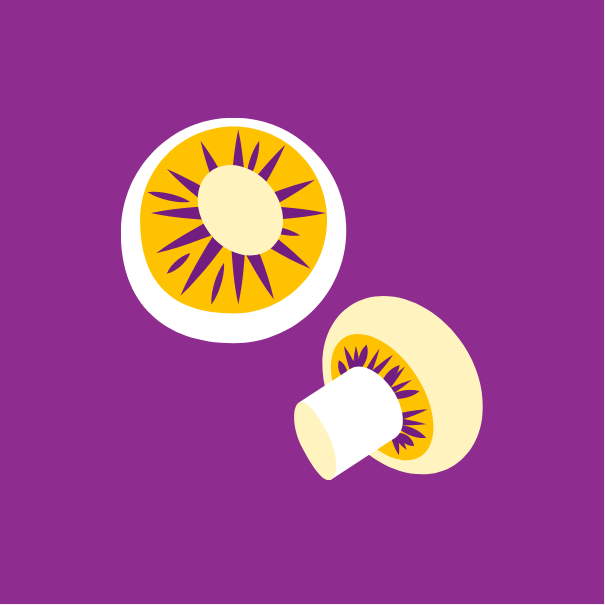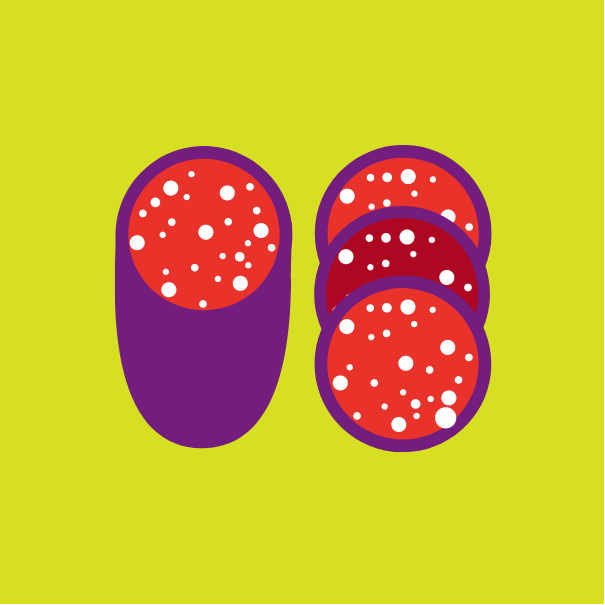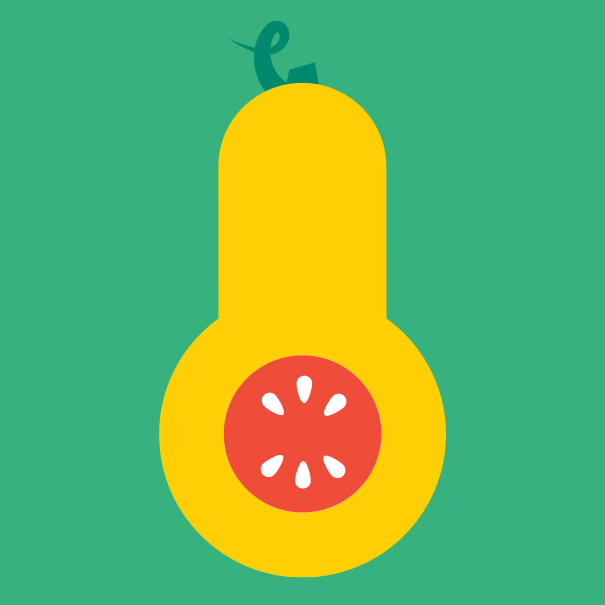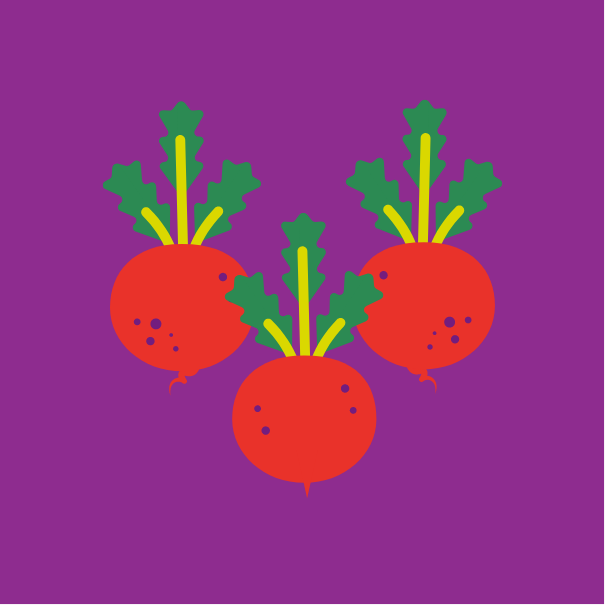by Andy Gricevich, Newsletter Writer
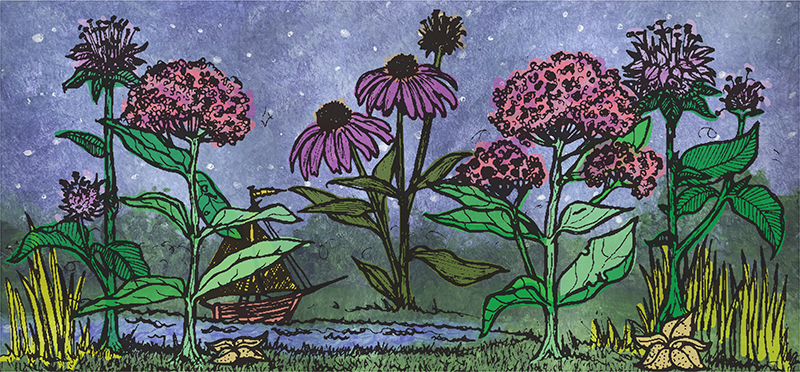
The lawn is weird. From a historical perspective, it’s an anomaly for people to desire such a homogenous patch of ground around their homes. For most of our time on the planet, the land has been a place to hunt, forage, or farm, and rendering it unproductive for those purposes would have been seen as an act of collective self-destruction. How did the pure green yard come to be?
Lawns first spring from the demands of feudal lords who, in order to more easily spot invaders and poachers, had the peasants under their yoke cut short some of the pastures surrounding their castles. From there, the lawn becomes a status symbol, with aristocrats employing labor to establish sculpted spaces for leisurely walks and picnics. In the 1700s, the lawn fad comes from England to North America, promoted by Thomas Jefferson and other prominent landowners with the luxury to imitate English models—while New England cities begin to establish “commons” of mown greenery, sites of many of the crucial battles of the Revolutionary and Civil wars. In the next century, the first companies distributing imported grass seed appear, and find customers among grazers, whose imported cattle, while decimating populations of native plants, can eat European grasses with less destructive impact.
Around the same time, the invention of the improved lawnmower makes pristine yards accessible to more of the population. Suburbs explode in the twentieth century, especially after the Second World War, when developers capitalize on the return of countless veterans. At the same time, certain corporations, with a massive surplus of excess nitrogen synthesized for weapons, introduce chemical fertilizer to the U.S., encouraging real estate developers to promote their use in lawn maintenance, and to make rules about what homeowners can and can’t do with their yards. Post-Vietnam War, a similar surplus of herbicide left over from products like Agent Orange makes its way back to domestic suburbs and cities, and we now see neighbors making war on dandelions with portable tanks of Roundup (or employing landscaping companies to do so for them).
WHAT’S WRONG WITH LAWNS?
In recent years, many people, and many city governments, have come to recognize the shortcomings of the traditional lawn. Ecologically, the traditional model has a lot of problems. For one, the root systems of the grasses planted in our yards are very shallow. That means they can’t draw water from deep in the ground—so, during hot and dry weather, we have to tap into our water supply with hoses and sprinklers to keep the grass healthy. Shallow roots also make for compacted soil, since there’s nothing to break up the ground. Rainwater, rather than filtering down to replenish aquifers and act as a reserve for plants, runs across the landscape, washing soil, leaves and debris into streets and gutters. Where lawns are regularly treated with fertilizers and herbicides, those chemicals join the runoff, ultimately ending up in ponds, rivers, and lakes, and affecting plant and animal life there.
The lack of plant diversity in lawns also changes the environment for urban and suburban wildlife. Fireflies, moths, and butterflies have reduced habitat for nesting, feeding and reproducing. Small mammals go without places to hide from predators. Bees and birds lack flowers to feed upon, and trees grow weak in the absence of any of the plant and fungal species with which they’ve co-evolved over millennia in a relationship of mutual dependence for nutrition and resistance to diseases and pests. For all these reasons and more (including the labor and money required to maintain a lawn), many communities and individuals are turning away from the lawn as a model, and putting other visions into action. One inspiring trend is the move toward transforming as much turf as possible into garden space, to grow healthy food for humans, increasing our control of what we eat. The other main trend is to “rewild,” replacing turf grass with plants that can benefit all manner of life forms around us.
STRATEGIES
Any increase in the ecological diversity of a lawn will be beneficial, and will likely decrease the perceived need for chemical inputs like fertilizer and herbicide. There are a range of approaches to rewilding a yard, and all of them are potentially worthwhile, whatever amount of time, money, and energy we have to put into such projects. The most intensive strategy focuses on establishing pure stands of native plants, especially perennials, which regrow from the same roots season after season.
Native plants have evolved along with native animals, so they’re well-matched with birds and pollinating insects. Perennials can develop long-deepening root systems that loosen the soil and make the most of the water supply in the ground. Establishing the purest possible population of native perennials in a yard can be a lot of expensive work: removing turf with rakes and motorized tilling machines, mulching to prevent regrowth, purchasing seeds and plants from companies that grow them, and vigilant weeding over years. At the same time, it can produce beautiful, healthy plant communities, resilient in the face of shifting conditions (like drought or surprise frosts), and selected for mutual support between plant species, and of other living things. A variety of companies and individuals are available for consultation on how to prepare a site, select the most appropriate plants for your soil type, and increase the likelihood of successful establishment of your rewilded lawn.
At the other end of the spectrum, you can take a low-labor, low-cost approach. Learn a little about some plants in your area that grow in places somewhat like your yard, or that seem to do well just about anywhere. In late summer and fall, take some walks in prairies, woods and other natural areas, and collect seeds from those plants (or order them online, or get them from friends). When it rains, rake up the turf in however many spots you have time for, toss some seed around, and wait to see how things go. Many seeds benefit from overwintering, so it’s usually best to plant in the late fall and winter, and let them sleep under the snow for a season. It’s up to you how much of a purist you want to be about making sure your seeds are from native plants.
While it won’t make as radical a change in your yard, this sloppier method can be surprisingly successful! Depending on what plants you’ve chosen to seed or transplant, within a year you could easily see a dramatic increase in the number of hummingbirds, butterflies, bees, and lightning bugs around your home. It’s amazing how much habitat one wildflower can provide for many creatures, by contrast with turf grass. Of course, you can also choose to work at any point between the two extremes, and you’ll be making some kind of contribution to greater ecological health and, one could argue, the well-being of human communities, merely by deviating from the norm.
SOME PLANTS
In selecting plants and seedlings for your yard, consider what it will take to establish a healthy population, as well as what ecological role a given species might play. A delicate, slow-reproducing plant will require more care than one that produces many seeds or has spreading roots that can potentially outcompete turf grass. Diversity helps; different plants are able to tolerate different conditions, and to coexist to mutual benefit with their diverse root systems, forms, sizes, and leaf densities. One good initial strategy is to mix “weedy” native plants with others that take a little longer to establish solid populations.
Two such favored species are milkweed and, perhaps less renowned, our native purple bee balm. Milkweed is often the first native plant introduced to yards, mostly because of its well-known importance for the monarch butterfly, which migrates thousands of miles. Monarch populations have declined over the last fifty years or so, due to eradication of milkweed and other wildflowers by suburbs and industrial agriculture.
Milkweed flowers are by no means the only food the butterflies can feed upon for nectar, but they are the primary food for monarch caterpillars, so the plant is essential for butterfly reproduction. Milkweed has also been a very important (and delicious) traditional food plant for humans at various stages of its growth, and a few trials and studies have shown that conscientiously-harvested patches of milkweed become more resilient and more beneficial to monarchs than those left alone—just in the way that thinned populations of garden plants and judiciously-pruned fruit trees do better than those neglected by humans.
Bee balm (monarda fistulosa), also commonly known as wild bergamot, is another plant long valued by humans for its uses as food and medicine. Like other members of the mint family, it spreads prolifically, and it’s beloved of many species of native bees, other pollinating insects, and birds—while, like other mints, it’s great at repelling hostile insects, including those we don’t like to have around, such as mosquitoes and ticks. With a flavor like complex oregano and a gorgeous, delicate lavender blossom, it’s a great plant to introduce to a lawn.
Among many lesser-known, fast-growing native plants is cutleaf coneflower (rudbeckia lacinata), an important food plant for many indigenous tribes, and also adored by goldfinches, hummingbirds, and other avians. With its towering stature and bright yellow flowers late in the summer, sochan (the Cherokee term) spreads quickly, and can mix well with other members of the massive aster family. For ground cover, a lovely candidate is common yarrow, with its feathery, fernlike leaves, pleasantly spicy aroma, delicate white flowers and uses in traditional herbal medicine. These are only a few of the countless plants you might begin with, and don’t even scratch the surface of the many species whose establishment may take more time and effort.
To minimize runoff from rain, you’ll also want some plants whose taproots (roots that go down, like carrots and radishes) can open the soil and co-exist with spreading root systems. Such plants also draw nutrients from deeper ground and bring them up in their foliage, ultimately depositing them in the topsoil and enriching it to the benefit of other vegetation. Dandelion and chicory (with its incredible blue flowers, lasting until the first hard frosts) can grow deep taproots, as can salsify, with its many iterations of dandelion-like, fluffy seedheads. Native prairie grasses like big and little Bluestem can often penetrate the ground to a depth of a dozen feet or more. Also, let’s not forget about trees! While many lawns lack space for larger guests, a small tree can do a lot to increase soil health and stability. Once a tree is well-established, it tends to need little care, and can be a host for other beautiful and beneficial plants in the yard.
ANYONE CAN DO IT
What if you don’t have a lawn? What if you do, but rent a house, and aren’t allowed to change anything about its surroundings—or, if you own a property, what if your neighborhood association is particularly lawn-centric, and you risk complaints or fines by establishing “weeds” in your yard? There are still possibilities.
Like all wildlife, birds and pollinating insects need “corridors” to survive well. They can only travel limited distances without stops for food, nesting sites, and places to lay eggs. A few of the right plants in pots, on a porch or balcony, can in themselves transform an ecologically barren spot into a place that increases the range of many of the creatures around us. One apartment on one city block might not seem like much, but it can be a significant increase in crucial habitat for a small bird, bee, or butterfly, even in a developed urban area.
Of course, we can also volunteer to help establish and care for patches of prairie along bike paths and at the borders of community gardens. We can teach by example, nudging the edges of what’s desirable to our neighbors and community members through how we tend the spaces available to us and how we talk about them. The more we interact directly with any living things, the greater our capacity for care, and the deeper our awareness of the interactions and mutual dependencies that make up the more-than-human world. Rewilding is one of countless small things we can do to shift the direction of our place on the Earth and spread beauty for ourselves and those around us—and maybe liberate ourselves from a lot of yardwork! Let’s tear up some turf and spread some seed.


